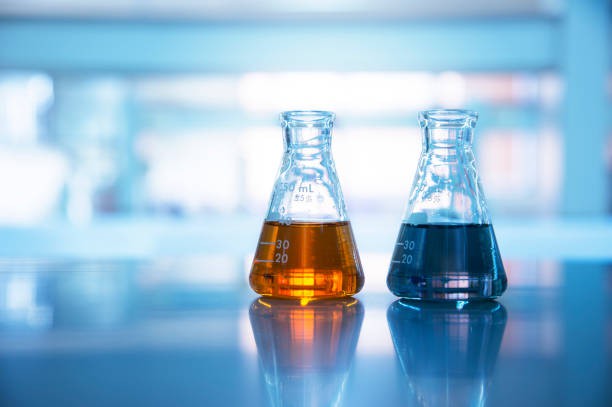Quantitative NMR Analysis of Chemical Substances
Quantitative nuclear magnetic resonance (qNMR) is a potential benchmark method for the determination of organic compounds, with many advantages including
- It is a direct analysis method (except for structural related impurities, there is no need for qualitative and quantitative analysis of impurities).
- Strong versatility.
- The analysis time is short.
- Non-destructive.
There is no need to obtain its own reference materials for the tested object (several traceable reference materials can support the traceability of all organic compounds).

Creative Biostructure can provide customers with quantitative analysis services for chemical components in organic compounds, inorganic compounds, polymers, natural products, pharmaceuticals, food ingredients, industrial chemicals, environmental samples, and biological liquids. We can test 1H, 13C, 9F, 31P, 29Si, and 17Q NMR spectra.
Our Approaches
- Purity analysis
We can analyze the purity of the sample by comparing the strengths of different signals in the NMR spectrum.
- Concentration measurement
By comparing the signal strengths of samples and standards with known concentrations, we can determine the concentration of compounds in the solution.
- Determination of molecular mass
The chemical shifts of atomic nuclei in nuclear magnetic resonance spectroscopy are influenced by the nuclear mass and its surrounding chemical environment. By analyzing the physical displacements of different nuclei in a molecule, we can determine the mass of the molecule.
Analyzable Samples
The samples we can analyze include but are not limited to
- Organic compounds such as alcohols, aldehydes, ketones, carboxylic acids, amines, and amides.
- Inorganic compounds, such as metal complexes, salts, and catalytic compounds.
- Polymers such as polyethylene, polystyrene, and polypropylene.
- Natural products such as proteins, nucleic acids, and carbohydrates.
- Drugs such as antibiotics, steroids, and antihistamines.
- Food ingredients such as vitamins, amino acids, and pigments.
- Industrial chemicals such as solvents, adhesives, and surfactants.
- Environmental samples such as water, soil, and air pollutants.
- Petroleum chemicals such as crude oil, gasoline, and diesel.
- Biological fluids such as blood, urine, and saliva.
Sample Delivery Requirements and Precautions
- Solid or liquid. 20-100mg in a plastic centrifuge tube.
- The sample is completely soluble in a common volatile solvent (water, toluene, DMSO, methanol, chloroform, etc.)
Workflow of Our qNMR Service
| Step | Description |
|---|---|
| Sample preparation | You can choose to provide samples or entrust us to prepare samples |
| Preparation of standard solution | A standard solution is prepared by dissolving a known amount of the reference compound in the same solvent used for the sample. |
| NMR acquisition | Perform a single scan. If necessary, we will perform additional scans to improve the signal-to-noise ratio. |
| Integral | Integrate the NMR spectra of the sample and standard to determine the relative strengths of the reference and sample peaks. |
| Calculation | Sample concentration= (reference peak area in the sample/reference peak area in the standard) x standard concentration. |
Why Select Us
- We mainly focus on research and development, analysis, and testing. Rich experience and wide range of services.
- Our testing cycle is short, the cost is low, and the data is scientific and accurate.
- We support nationwide on-site sampling and sample-sending testing services.
- We have multiple branch laboratories around the world.
- We have advanced testing equipment and a formal testing team.
- We provide perfect after-sales service.
- We will sign confidentiality agreements with customers and pay attention to protecting their privacy.
Creative Biostructure is committed to providing high-quality NMR analysis services to advance the life sciences fields. If you have any questions or needs, please contact us and our customer service staff will help you the first time.
Ordering Process
